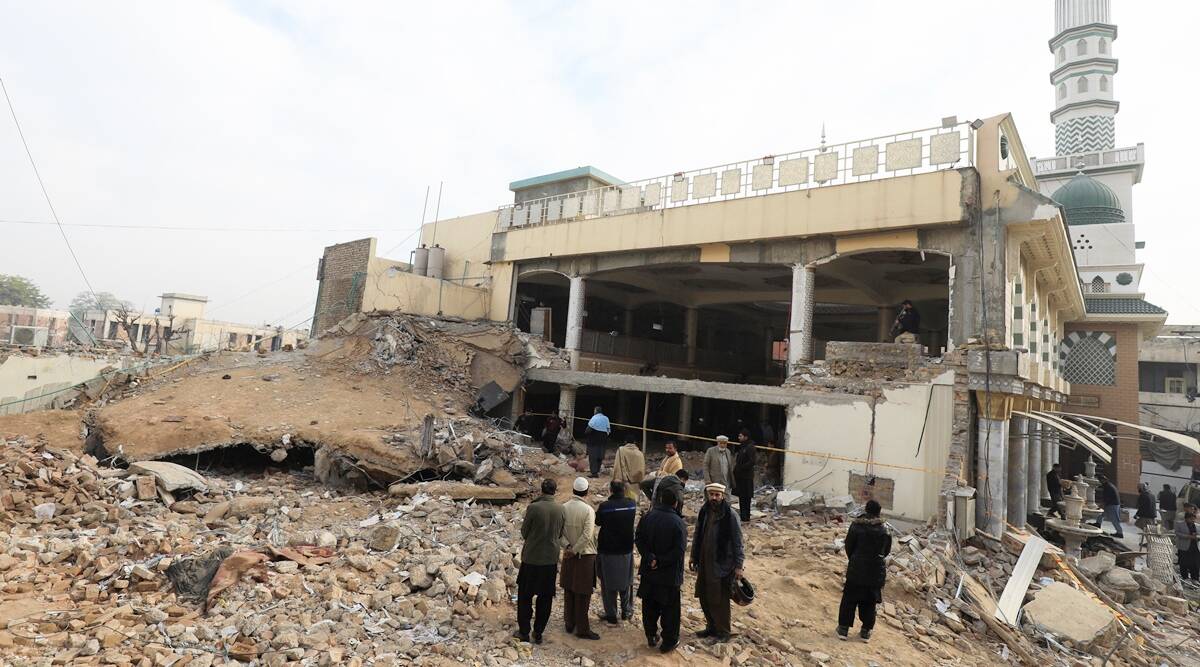Widespread protests have erupted in Khyber Pakhtunkhwa province of Pakistan following the horrific suicide bombing at a mosque located in the police lines locality of the provincial capital, Peshawar, a week ago. A noticeable feature of the protests is that they have been entirely peaceful.
Notwithstanding the retraction of an initial claim of responsibility, the Peshawar mosque bombing is widely believed to have been carried out by the Tehrik-e-Taliban Pakistan (TTP). The TTP, ideologically aligned with the Afghan Taliban and international terrorist groups such as al Qaeda, emerged in the Pashtun belt of Pakistan adjoining Afghanistan in the aftermath of the September 11, 2001 terrorist attacks in the US. Following the American invasion of Afghanistan, the remnants of the Afghan Taliban, al Qaeda and affiliated terrorist groups escaped to what was then known as the Federally Administered Tribal Areas (FATA), the adjoining areas of Khyber Pakhtunkhwa and, from there, to the larger cities of Pakistan.
Under pressure from the US and attracted by the generous financial inducements subsequently offered by the Americans, Pakistan then ruled by the late General Pervez Musharraf joined the “Global War on Terrorism” and actively assisted US forces in hunting down operatives of al Qaeda and other international terrorist groups from Central and West Asia, Chechnya, Xinjiang, South East Asia and other parts of the world who had been provided shelter by local residents of the tribal regions of Pakistan. Only a decade earlier, in the 1980s, it was these very tribal regions that had been used as staging posts by the mujahideen from across the world, armed by the CIA, funded by Saudi Arabia and trained by the ISI of Pakistan, for carrying out jihad against Soviet forces in Afghanistan. It was largely the “collateral damage” caused by US drone strikes and accompanying military operations by Pakistan in the tribal areas in the aftermath of the 9/11 attacks that led to the emergence, in 2007, of the TTP which retaliated by taking up arms against the Pakistani state.
Even as the Pakistani Army pursued operations against al Qaeda, the ISI quietly began to provide shelter, training and funds to the Afghan Taliban in Quetta, Peshawar and elsewhere, assessing correctly that the Americans would eventually tire and leave Afghanistan. By 2005, the “neo-Taliban” had commenced a fledgling insurgency against US forces in Afghanistan and the Islamic Republic of Afghanistan. The insurgency would gather momentum in the years that followed, eventually compelling the US to retreat in a disorderly manner in August 2021 and paving the way for the return of the Taliban to power in Kabul. Contrary to the naïve expectations of the Western powers, Taliban 2.0 proved to be no different from their previous incarnation in adhering to their dystopian version of Islam, including opposition to the rights of women and minorities.
Between 2007 and 2009, the TTP launched an insurgency in the FATA and adjoining areas of Khyber Pakhtunkhwa. The situation in the Swat (Malakand) region deteriorated to such an extent that the insurgency reached the doorstep of Islamabad. The TTP were joined in their campaign against the Pakistani state by the Punjabi Taliban that gained prominence after the army siege to flush out terrorists from the Lal Masjid in Islamabad in July 2007.
Left with no option, the Pakistani Army fought back against the TTP, driving them from the settled areas of Khyber Pakhtunkhwa into their hideouts in the FATA. In 2014, the Army launched operation Zarb-e-Azb to evict the TTP from its last bastion in North Waziristan. The hapless residents of the tribal areas were caught in a vicious and no-holds-barred fight between the Army and militants; their homes destroyed, their livelihoods lost and their youth subjected to torture and enforced disappearances. It was this trail of death and destruction that led to the emergence of the entirely peaceful Pashtun Tahafuz Movement (PTM), under the leadership of Manzoor Pashteen, Mohsin Dawar, Ali Wazir and other student activists who demanded an end to enforced disappearances and extra-judicial killings in the tribal areas and the creation of enabling conditions, including the removal of landmines planted by the military, for displaced residents to return to their homes. These legitimate demands have largely been ignored by successive Pakistani governments, reinforcing the belief that those responsible for trampling on the human rights of the Pashtuns, Baloch, Sindhis and other ethnic minorities in Pakistan will never be held accountable.
A defining feature of the Pakistani Army’s counter-terrorism operations against the TTP was the care taken to ensure that the TTP’s ideological brethren, the Afghan Taliban and the affiliated Haqqani Network, who also operated from the tribal areas, remained untouched. During the 2014 operations in North Waziristan, it was an open secret that the Afghan Taliban and the Haqqanis had been tipped off in advance, enabling them to relocate and carry out their offensives against Western and Afghan forces from bases inside Afghanistan. Following the developments of August 2021, the Pakistani Army and the ISI hoped that their decades-long investment in the Afghan Taliban and the Haqqanis would yield dividends and that their “proxies” would exert pressure on the TTP leadership, which had fled to Afghanistan after the 2014 operations, to lay down arms and join the Pakistani mainstream. The Pakistani establishment, represented by Lt. Gen. (Retd.) Faiz Hameed, who headed the ISI during the tenure of Prime Minister Imran Khan, made a series of concessions to the TTP including releasing many of their jailed operatives and allowing a large number of TTP fighters to return and settle in the tribal region without surrendering their weapons. These unwarranted concessions have now backfired spectacularly, with the TTP abrogating their tenuous ceasefire with the Army and launching a fresh wave of attacks against the Pakistani security forces.

